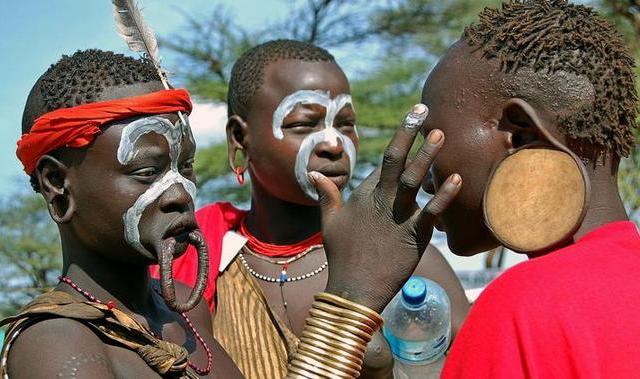 The Mursi women of Omo Valley. (Getty Images)
The Mursi women of Omo Valley. (Getty Images)
BY AMANDA JONES
With every generation, the chance to see some of the world’s last tribal people living authentically dwindles. When I visited the Omo Valley in southern Ethiopia almost two decades ago, there were few dirt roads, and tribes lived in mud huts and were mostly naked except for spectacular body paint. The Mursi were particularly sensational, with dotted body decorations and the women with enormous lip plates.
They were pastoralists and lived in isolated regions that, until recently, were left alone. When I was there in the late ’90s, they had seen few white people, although now there appears to be a steady stream. Among other tribes in the area are the Kara, the Bodi and the Hamar.
To attract more tourists, the government recently turned a large part of the Omo Valley into a giant national park, burning some villages and forcing certain tribes off their land. Then it decommissioned much of that parkland and turned it over to massive commercial agricultural operations.
Human Rights Watch says encroaching on tribal land for large-scale agricultural use is illegal, but it’s happening here. And what is being cultivated? Sugar, which needs water and power in what is mostly arid desert. Without involving the tribal people, the government built a huge hydroelectric dam on the Omo River, opening this year. It will divert the water upon which thousands of tribes and their livestock depend, thereby creating the largest irrigated farmland in Ethiopia.
Read more at LA Times.
—
Join the conversation on Twitter and Facebook.

























